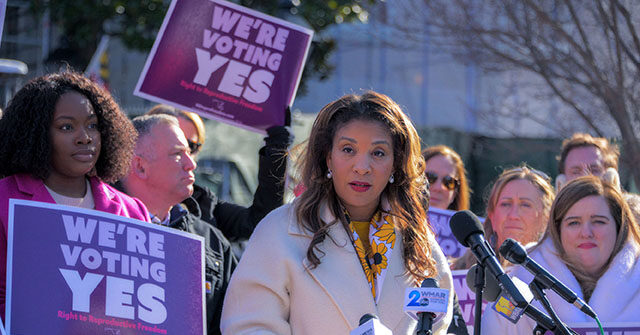Maryland has emerged as one of the states with the least restrictions on abortion, a status shared with eight other states and Washington, DC. Following a legislative vote in March 2023, a proposed constitutional amendment, appearing as Question 1 on the November 2024 ballot, seeks to cement the right to abortion throughout pregnancy. Should a simple majority of voters approve this measure, Maryland would become a permanent haven for unrestricted abortions, which would be challenging to alter without another public referendum or lengthy legal proceedings. The political climate surrounding this initiative underscores the broader national debate on reproductive rights following the Supreme Court’s decision to overturn Roe v. Wade.
The proposed amendment asserts that every individual has the fundamental right to reproductive freedom, emphasizing that the state cannot impede this right unless justified by compelling state interests met through the least restrictive means. This framing illustrates how ballot measures can serve as powerful tools for enshrining rights into state constitutions, prioritizing them over existing laws and enhancing their permanence. Progressive organizations like Planned Parenthood and the ACLU typically back such initiatives, often significantly outspending pro-life groups, whose resources may not rival those of their opponents.
Historically, pro-abortion ballot measures have been successful since the fall of Roe. Notable instances include the rejection by Kansas voters of a proposed constitutional amendment asserting no right to abortion, alongside affirmative actions by voters in California, Michigan, and Vermont to include abortion rights in their state constitutions. The trend suggests a strategic momentum among pro-abortion advocates using ballot measures to solidify their cause, particularly in states with contrasting legislative environments. As seen in the outcomes in states like Ohio, Montana, and Kentucky during recent elections, these measures can sometimes spark significant voter turnout and mobilization on both sides of the debate.
Despite the increasing normalization of late-term abortions within this discourse, pro-abortion media outlets often diminish or deny the occurrence of late-term procedures. There are only a handful of clinics nationwide that perform late-term abortions, but estimates suggest that several, including at least one in Maryland, conduct these procedures right before the threshold of viability. This absence of comprehensive reporting creates a skewed public perception regarding the prevalence and ethical considerations surrounding late-term abortions.
Statistical data from the CDC indicates that thousands of unborn babies are aborted after 21 weeks of pregnancy each year, contradicting the narrative that late-term abortions are a rare phenomenon. While only a small percentage of total abortions occur beyond this point, the sheer number translates to thousands of viable pregnancies terminated through this procedure. For instance, in 2021, over 625,000 legal abortions were recorded, with around 1% occurring after the 21-week mark. Projections suggest that by 2023, with more than one million abortions anticipated, late-term abortion numbers could climb significantly, raising substantial ethical concerns and prompting debates on the societal implications of such practices.
The term “late-term abortion” itself has evoked contention, with pro-abortion organizations challenging its definition, suggesting that official medical guidelines consider “late-term” as any point past 41 weeks, after the normal gestational period. In contrast, pro-life advocates posit that any abortion occurring after the threshold of viability could be classified as late-term. This discord reflects the broader struggle over terminology and definitions in the abortion debate, highlighting the need for clarity amidst a landscape often marked by emotional and politically charged rhetoric. The future of abortion rights in Maryland remains uncertain yet pivotal, as upcoming elections symbolize a critical juncture in the ongoing battle over reproductive freedom in the United States.

